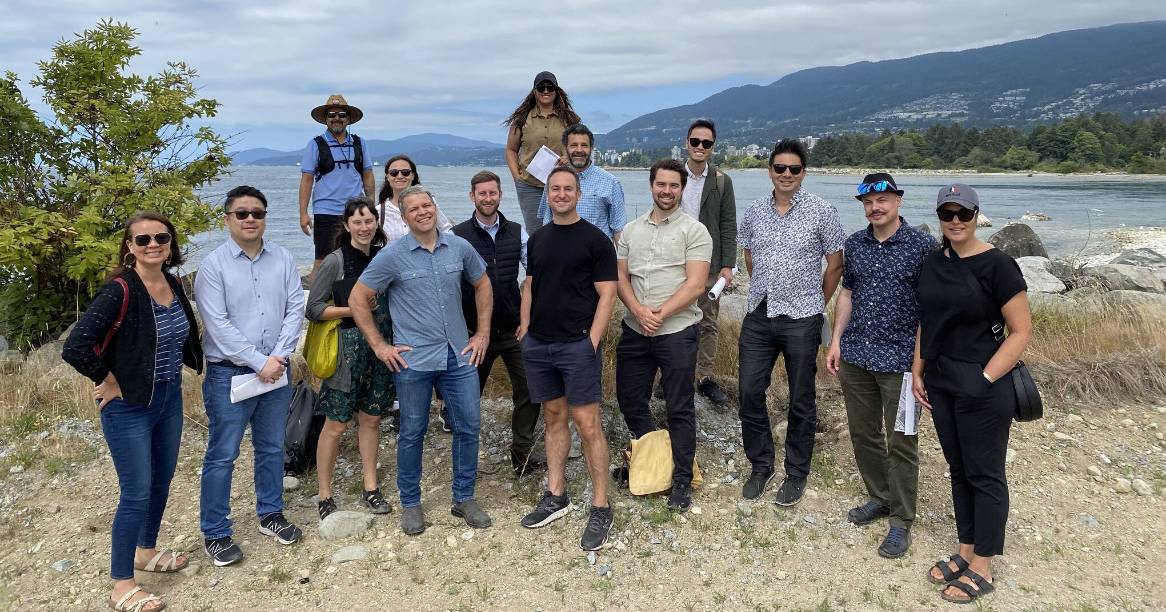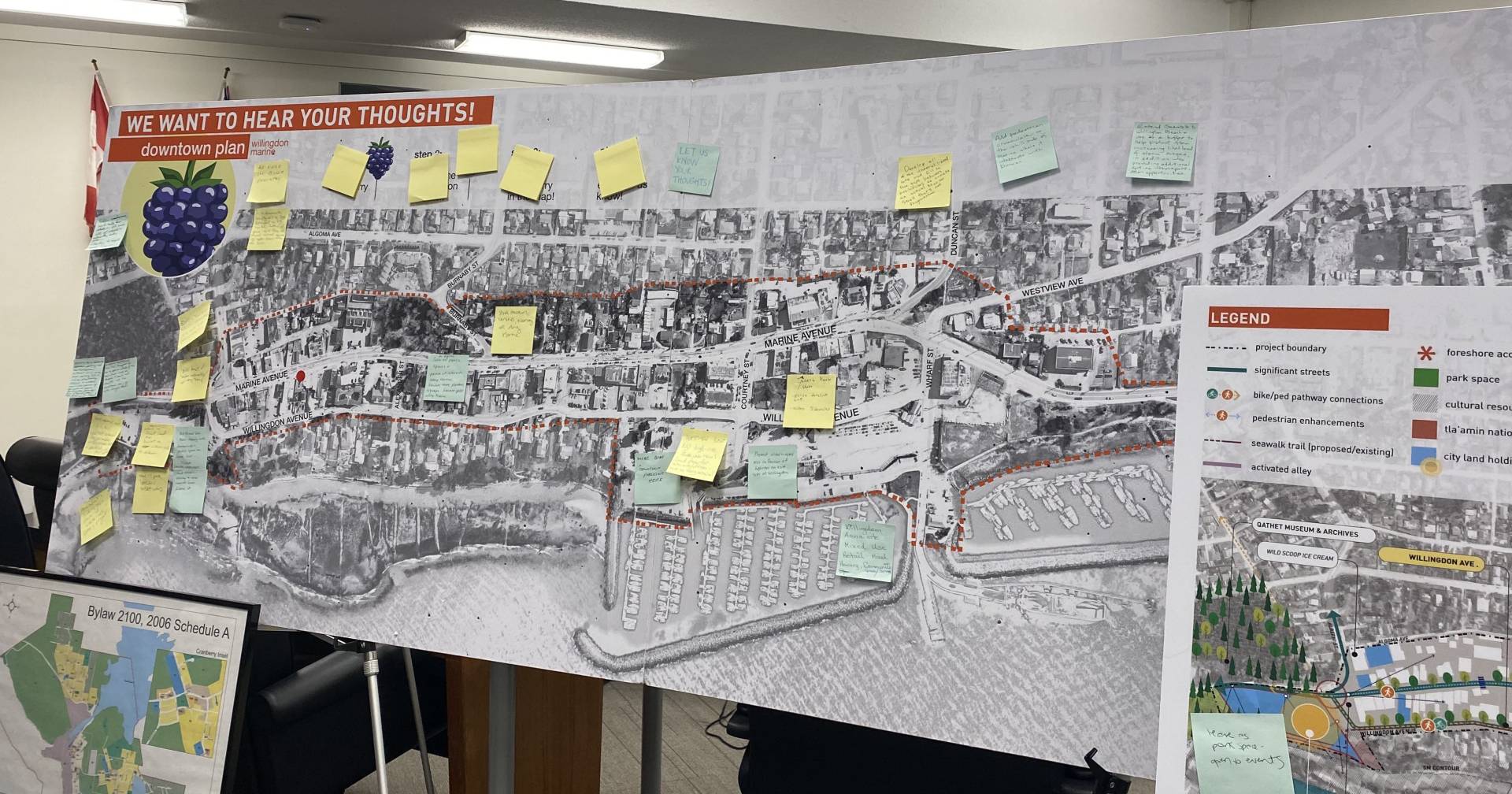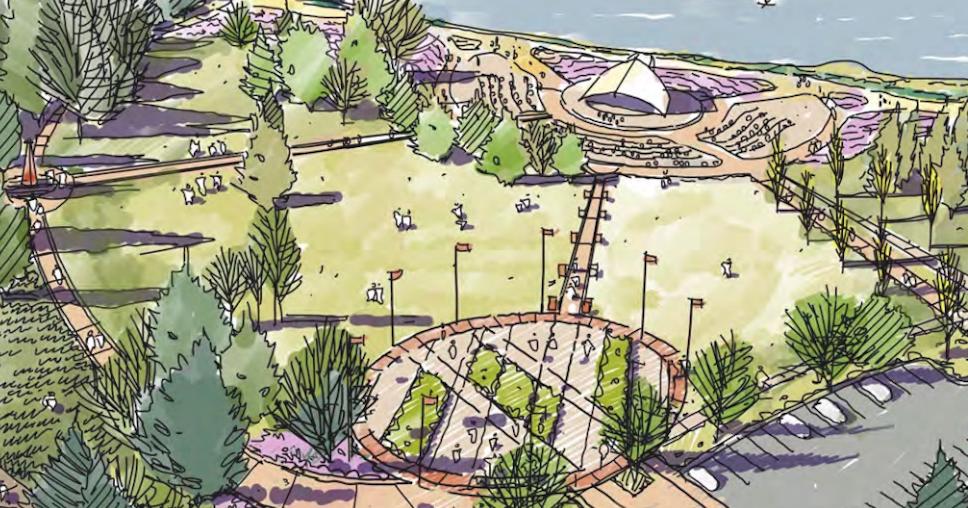New renderings of the massive Garibaldi ski resort near Squamish
Published
The new Garibaldi at Squamish ski resort could have a design that highlights the area’s connection with the Squamish First Nation, based on new preliminary concept artistic renderings that provide higher detail.
The planned all-season resort’s architectural design and public art could carry motifs and themes that “respectfully create a destination” where visitors can experience the First Nation’s culture.
For example, the design of an upper mountain trail and viewing platform, demarcated by oversized sculptures, could be inspired by the legends and history of their people.
The resort development is funded and spearheaded by NHL Vancouver Canucks owner Aquilini Investment Group, and Northland Properties Corporation, which owns the NHL Dallas Stars, Grouse Mountain Resort, Sutton Place Hotels, Denny’s Canada, Moxie’s Grill & Bar, and Shark Club.
The location on Brohm Ridge is about 13 km north of Squamish’s city centre, accessible from a new access road south of Brohm Lake on the Sea to Sky Highway.
This $3.5 billion resort will be built over multiple phases beginning later this decade, with a final size of 1,635 acres of skiable terrain on 131 trails and 21 lifts capable of hosting 15,250 skiers and riders. A wide range of non-alpine skier offerings will support 14,000 guests in the summer.
There will be close to 22,000 beds, including 1,300 hotel rooms, 2,200 condominium homes, 840 townhomes, and about 1,200 single-family homes. Several village clusters are planned, including a 62-acre, pedestrian-oriented main village at an elevation of 1,100 metres — the same elevation as the top of the Grouse Mountain Skyride — with hotels and 250,000 sq. ft. of retail, restaurants, and amenities.
Much about the project’s master plan has already been previously reported, and the proponents are continuing their work with the District of Squamish and the local First Nation on outstanding issues.
Currently, Garibaldi at Squamish is the only planned new or expanded ski resort project to see an environmental approval from the provincial government, although there are 40 conditions attached. This approval was granted in 2016.
Now, five years later, the proponents are in the process of seeking an extension of the fixed deadline for six water-related conditions. The environmental approval certificate requires these water-related conditions be met by January 2021, but the project team is looking to have the deadline extended by another five years.
Earlier this year, a detailed draft transportation plan was released by the proponents for their next step to meet the 11th condition of developing a comprehensive transportation plan that must be approved by the BC Ministry of Transportation and Infrastructure.
Transportation is a critical piece of the project, given the significant additional travel demand that will be generated by the resort, which will strain the Sea to Sky Highway’s current configuration even further. Vehicle traffic on the highway has increased ever since the pre-2010 road network upgrade, resulting in added travel demand from tourism, economic development, and population growth.
The highway has three lanes, both directions combined, immediately adjacent to the resort. There could be up to a million skiers each year, with an average daily demand of 7,000 visitors during the peak winter season, and additional summertime visitors.
On the opening day of the first phase, the resort will offer a private bus shuttle service to and from a central hub within the resort. Those who drive will park once at a new park-and-ride facility next to the highway, and get around the resort by bus shuttle or active transportation.
Over the medium term, the resort could partner with the existing private coach companies that currently provide long-haul bus service between Metro Vancouver and Whistler or create their own service. Such coaches could provide a frequent direct connection to the central village transit drop-off from Metro Vancouver.
Eventually, there would be transportation hubs at each major base of the resort, and potentially in Metro Vancouver, which would help reduce vehicle traffic on the highway and entering the resort. This also potentially enables the ability for commuters to use the regional bus service for their work or study trips.
“Efficient regional bus service would provide an appealing alternative to driving to the resort, particularly for those travelling from the Lower Mainland or the Vancouver airport to the Garibaldi Resort,” reads the report.
“By bundling these private (or potentially public) services with tiered lift tickets, integrating the services with dynamic wayfinding apps and other such incentives, these more regional bus services could carry a substantial share of visitors to and from the resort."
As the resort completes further phases, several additional park-and-ride facilities will likely be necessary within the resort, and potentially along the highway corridor.
The resort could use electric-battery buses for its main fleet, and offer a supplemental public transit mode of electric micro buses — accommodating about half a dozen passengers — that provide on-demand, app-based, door-to-door services.
Ultimately, the goal is to decrease personal vehicle use as much as possible both outside and within the resort’s boundaries.
“Having an efficient and well-considered village transportation design is an essential part of ensuring the success of Garibaldi. A large aspect of this is a central transit drop off area that serves as a transportation hub for each base of the village. This central transit drop-off would serve as an effective location for onsite lockers/valet service, public/private bus drop off, micro transit, and ride hailing,” continues the report.
“The goal of a central transportation hub such as this would be to ensure that guests have a seamless transportation experience on route to the resort, and that this seamless and hassle-free experience continues once they have arrived. Providing seasons pass holders with on-mountain gear storage for skis and poles in the winter, or bikes in the summer, means that visitors do not have to transport their equipment to and from the resort, making the prospect of taking a regional bus service more feasible.”
An additional transportation component within the medium term could be a new gondola system that shuttles people between the major park-and-ride facility next to the highway and the resort’s main village up the mountain.
Over the long term, the project team opened up the possibility of rail transit along the Sea to Sky Corridor, and ferries to the downtown Squamish waterfront.





